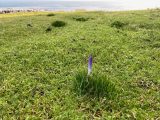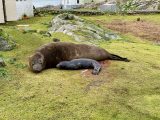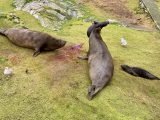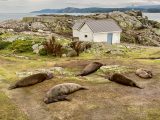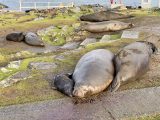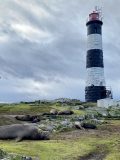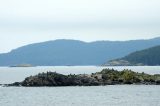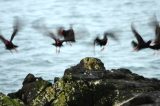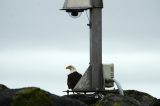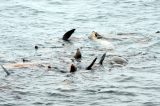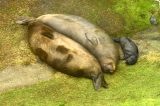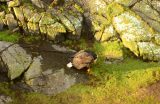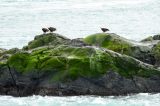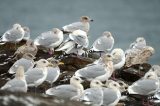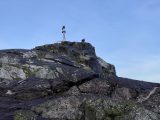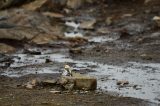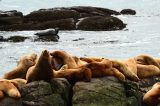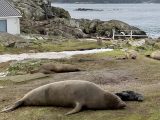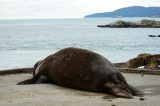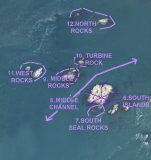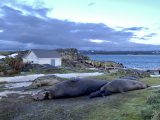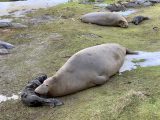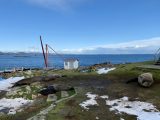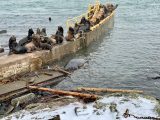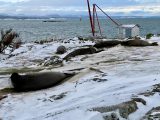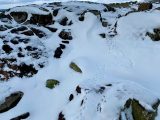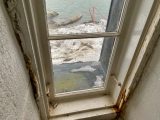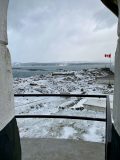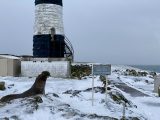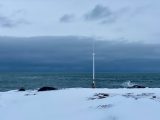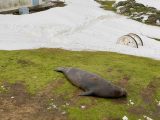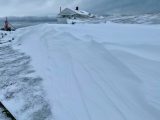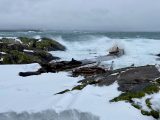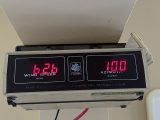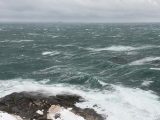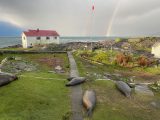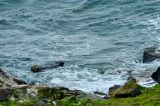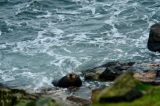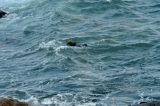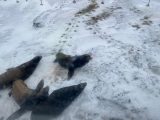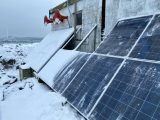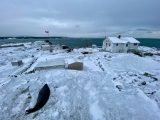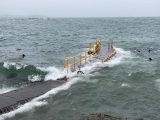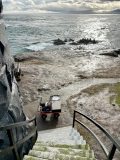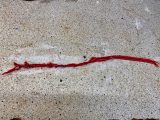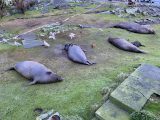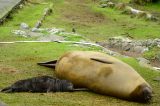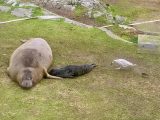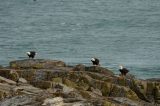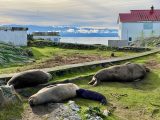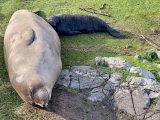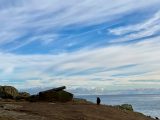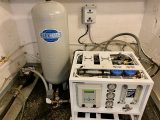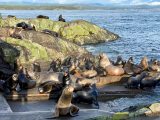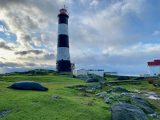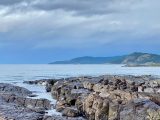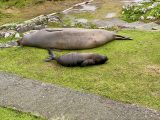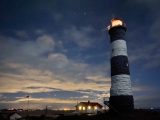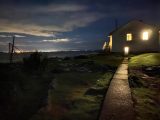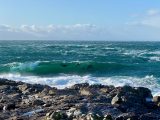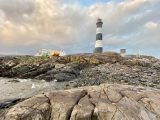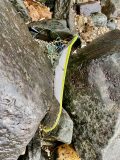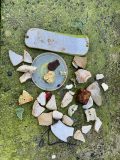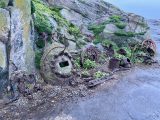Wind: yesterday 1-21 knots varying directions mostly N, today 0-24 knots swinging around N to N
Sea State: yesterday rippled, today up to 2 m swell
Visibility: 10-15 NM
Sky: both days mixture of sun, clouds and rain
Temperature: yesterday 7 to 9 °C, today 8 to 9 °C
Atmospheric CO2: 413.25 ppm (recorded by NOAA at Mauna Loa Observatory, Hawaii)
The elephant seal harem has a new addition. In the early afternoon yesterday, another pup was born. Since December 29, there have been four births, which is a record for an elephant seal pupping season on Race Rocks. Unfortunately, only about half of pups tend to survive, due to aggression from other elephant seals, learning to nurse, weaning and predation.
There were three visitors yesterday to do some maintenance on the desalinator: Greg, Warren and Cole. Warren and Cole got a once in lifetime opportunity to see the elephant seal birth. They were walking from the desalinator building to the main house, when Warren noticed the pregnant seal had more flippers than usual. Within less than a minute, the female slid up a grassy incline and out popped the pup. It seems like she used gravity to her advantage. All the humans went into the house, so as not to disturb the seals. The new mother vocalized with the pup and the pup wriggled around. The pup appeared larger than the other three at birth. Perhaps it is a male, as male pups tend to be larger than female pups.
What followed next was difficult to watch. Just ten minutes after the pup was born, it was attacked by another mother. The elephant seal mother that gave birth to the third pup, tossed around and bit the new pup, drawing blood between the eyes and on the head. After a few attacks and several minutes passing, the new mother appeared to intervene and put itself between the aggressive seal and her pup. The mother that gave birth to the second pup also appeared to intervene, by approaching and also putting itself in the middle. Out of the five adults in the harem, the third mother was the only one that showed aggression towards the new pup.
Today, Alex and Greg visited for a couple hours in the middle of the day to problem solve a power issue that presented itself yesterday. It’s great to have a lot of people on land supporting the various off grid systems on Race Rocks.
Here are a few photos from the past two days of the flora and fauna on Race Rocks:
- Yesterday, the first crocus was seen on the north side of the main house. Today, the other darker green clumps also had signs of the purple flowers shooting upwards. This was a surprising sight for me, as this area was covered in snowdrifts just a week ago. These flowers were most likely planted decades ago by lighthouse keepers.
- The new elephant seal mother and pup one minute after birth
- The new pup is picked up by the mother that gave birth to the third pup. The new mother and third pup look on.
- The elephant seal harem, as seen yesterday afternoon from a window in the house. The pups happen to be lined up in the order of youngest to oldest from left to right. The alpha male is in the middle at the bottom of the steps.
- The new pup with its mother this morning, showing signs of blood from the attacks.
- A view from today of the elephant seal harem with the lighthouse in the background

